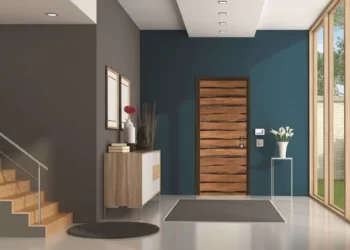If you’re looking to transform your home into a masterpiece, there’s no better way to do it than through quality residential painting. Your choice of colors can breathe life into your living spaces, create ambiance, and reflect your personal style. In this comprehensive guide, we will delve into the world of residential painting, providing you with expert insights, tips, and tricks to elevate your home’s aesthetics.
The Art of Color Selection
Understanding Color Psychology
Choosing the right colors for your residential painting project is crucial. Colors have a significant impact on our emotions and can influence our mood. For instance:
Calm and Tranquil: Soft blues and greens can create a sense of serenity in bedrooms and bathrooms.
Energizing: Shades of yellow and red can add vibrancy to kitchens and dining areas.
Sophistication: Deep purples or rich browns can lend an air of elegance to living rooms and dining rooms.
Before you start painting, consider the ambiance you want to create in each room. Think about the colors that resonate with you and the feelings you want to evoke.

Read more home renovation tips here.
Complementary Color Schemes
One popular technique in residential painting is using complementary color schemes. This involves choosing colors that are opposite each other on the color wheel. For example, pairing warm oranges with cool blues can create a visually striking contrast.
Accent Walls
If you’re not ready to commit to a bold color for an entire room, consider painting an accent wall. This can be a single wall in a vibrant color while keeping the rest of the room neutral. It adds visual interest without overwhelming the space.
Preparing Your Canvas
Surface Preparation
Before you start painting, it’s essential to prepare the surfaces properly. This includes:
Cleaning: Remove dust, dirt, and grease from walls and ceilings.
Repairing: Patch up any holes, cracks, or imperfections in the surfaces.
Priming: Apply a high-quality primer to ensure paint adheres evenly and lasts longer.
Proper surface preparation is the foundation of a flawless paint job.
Choosing the Right Paint
Selecting the right type of paint is crucial for achieving a professional finish. Consider factors such as:
Paint Finish: Choose from matte, eggshell, satin, semi-gloss, or high-gloss finishes, depending on the room and desired look.
Quality: Invest in high-quality paint for better coverage and durability.
Environmental Impact: Look for eco-friendly, low-VOC paints that are safer for your family and the environment.
The Painting Process
Technique Matters
The technique you use while painting can make a significant difference in the final result. Some tips for a smooth application include:
Cutting In: Use a brush to paint edges, corners, and trim before using a roller for larger areas.
Roller Selection: Choose the right roller nap length for your surface – thicker naps for rough surfaces and thinner naps for smoother ones.
Even Coats: Apply paint in thin, even coats to avoid drips and uneven coverage.
Patience and Precision
Painting is a patient person’s game. Rushing through the process can lead to mistakes and unsightly blemishes. Take your time, and if necessary, apply a second coat for a flawless finish.
The Finishing Touches
Clean-Up
After completing your painting project, it’s essential to clean your brushes, rollers, and other equipment promptly. Proper cleaning prolongs the life of your tools and ensures they are ready for your next project.
Admire Your Work
Step back and admire the transformation you’ve created. Quality residential painting can breathe new life into your home, making it a more inviting and visually appealing space.
Conclusion
In conclusion, quality residential painting is an art that can truly transform your living spaces. By selecting the right colors, preparing surfaces meticulously, and applying paint with care, you can achieve professional results that leave a lasting impression.







